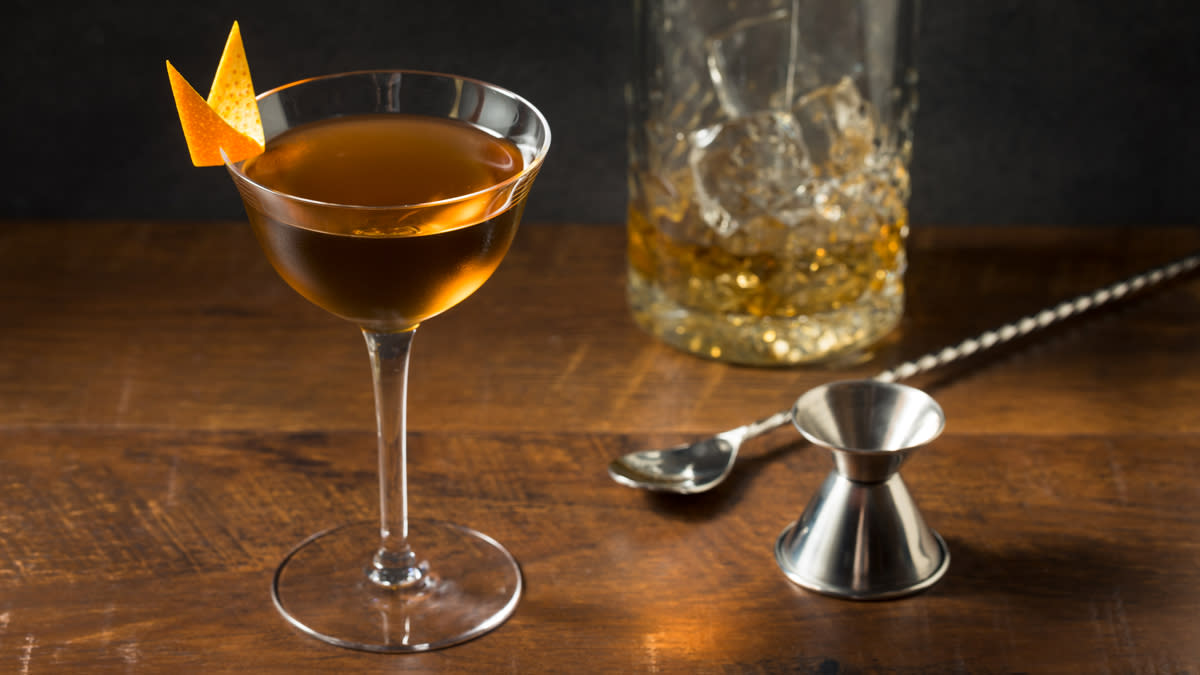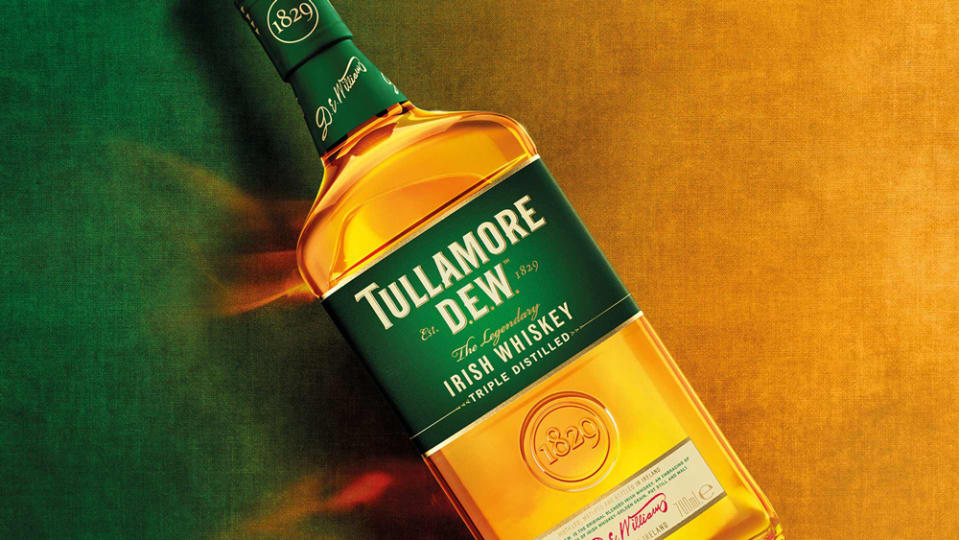How to Make a Tipperary, the St. Patrick’s Day Whiskey Cocktail for Adults

When I first started tending bar, in Boston in the mid-2000s, for a drink to be considered “Irish” it would need to either be a shot of Jameson or a pint Guinness, or else something added to one of those two to make it green. On St. Patrick’s Day this Irishness was expanded, bestowed on literally anything so long so it was tinted with the right shade of food coloring—Bud Light, Vodka Sodas, whatever—and I’d come off the shift with my fingers stained green to the knuckle. It was, in short, an unsophisticated understanding of Irishness.
At first glance, it might seem the Tipperary Cocktail is one of these: Irish whiskey, vermouth, and Green Chartreuse? Why the Chartreuse got to be green? But it only takes one sip to realize that this is not one of those at all. The Tipperary is not some neon gimmick. The Tipperary is a serious drink for serious people.
More from Robb Report
This Esteemed Irish Distillery Just Released Its Oldest Gold Spot Whiskey Yet
How to Make a Black Manhattan, a Rule-Breaking Twist on the Classic Whiskey Cocktail
It comes to us, like so many classics, from Hugo Ensslin’s stolid little pamphlet Recipes for Mixed Drinks, first published in 1916. To me, the word “Tipperary” sounds to me like one of the many archaic synonyms for “drink” or “bar,” but it’s not so—it is the name of a county in Ireland, and of a small town in that county, and more germane to our discussion today, the subject of a popular song around World War I called “It’s a Long Way to Tipperary.”
The song tells the story of an Irish laborer in London who misses his home and his beloved “Molly O,” and reflects mournfully he’s a long way from home. It was a smash hit (as much as anything could become a smash hit in 1914), and according to a book about the songs of that war, despite the fact that it wasn’t explicitly political or nationalistic, “to sing, to hum, or to whistle ‘It’s a Long Way to Tipperary’ was the patriotic and cheerful thing to do.” Bands and orchestras kept it fresh on everyone’s ears, newspapers across the country printed the lyrics, and somewhere in the middle of the decade, the story goes, a man was humming it when he walked into Ensslin’s bar at the Wallick Hotel in New York and asked for a drink. Inspired by the tune, Ensslin grabbed a bottle of Irish Whiskey and went to work, naming the resulting cocktail the Tipperary.
The supposed connection between the cocktail and the song is pure conjecture, but it’s not out of nowhere. We know this song was incredibly popular, and we know Ensslin was a German immigrant living in New York, so presented with the fact that he named a cocktail after a landlocked county in southern Ireland with no major cities (no slight intended to the towns of Clonmel or Carrick-on-Suir, which I’m sure are lovely), how could it not be named after the song? As far as I can tell it’s the Irish gents from the Dead Rabbit bar in New York that first made the association, and everyone has taken to repeating it. Including, it seems, me.
In any case, the Tipperary is, as mentioned, a serious drink. Irish whiskey is known for its friendly mildness, so to pair it with a charging rhinoceros like Green Chartreuse gives the cocktail a shove into a realm of intensity that Irish whiskey drinks rarely occupy. Made in equal parts as Ensslin originally conceived it, the Green Chartreuse utterly dominates the experience, but back down the liqueur and boost the other two ingredients a touch, and the Tipperary is a bold but charming drink. The Irish whiskey meets you up front, its light caramel sweetness amplified by the Chartreuse, while the mid-palate goes deep with vermouth’s red fruit before handing the baton back to the Chartreuse for long finish of herbal fireworks, a perfect adult companion for St. Patrick’s Day. And while it doesn’t pair particularly well with a foam green hat or light-up green plastic necklace, don’t worry, there’s plenty of other drinks for that.
Tipperary
1.5 oz. Irish whiskey
1 oz. sweet (red) vermouth
0.75 oz. Green Chartreuse
Add all ingredients to a mixing glass with ice and stir for 10 to 15 seconds (on small ice) or 20 to 30 seconds (on big ice). Strain up into a coupe or cocktail glass and garnish with an orange peel.
NOTES ON INGREDIENTS

Irish Whiskey: We’re living through a golden age of Irish Whiskey. Fifty years ago the industry had been so thoroughly destroyed that there were only two distilleries left in Ireland. In 2010, there were four. Today, there are more than 40. Irish whiskey has bounced back, with more styles and depth than you can shake a stick at, and the spirit’s reputation as universally mild and gentle and “smooth” is no longer dependably true, which is a good thing.
That said—for this cocktail, I thought it tasted best when the whiskey was more what we traditionally expect from the Irish, a soft and approachable blend, with a faint grain sweetness and perhaps even a subtle sherry or port finish. Every time I tried a Tipperary with something new and bigger and more flavorful—a single pot still whiskey, or a single malt, or something with a touch of peat—I liked it less.
The famous ones like Tullamore D.E.W, Jameson, Bushmills, and Power’s are delicious and totally appropriate here, as are the wonderful newcomers who embrace this mild tradition the Busker Triple Cask, or the single-grain (an unusual choice) but still approachable and lovely Glendalough.
Sweet Vermouth: Vermouth is funny. Because it’s an infused botanical product and each recipe is different, you might taste a bunch side by side and think they’re all decently similar, but the way they’ll react in cocktails is wildly unpredictable. I thought that the Tipperary would shine with the same vermouth I loved for the Bijou (an identical drink but with gin instead of whiskey), but where I loved Cocchi’s candied vanilla in that, here I found it to be good, but a bit too much.
I thought Carpano Classico was good if a touch muddy, like the flavors were in low resolution. I thought Dolin Rouge was good in that it practically disappeared, allowing more of the Chartreuse’s complexity to shine. I honestly thought all the vermouths were pretty good, but my favorite was the Martini & Rossi Riserva Speciale Rubino, a fuller and deeper version of their standard ubiquitous rosso, which still has the branchy herbs you expect from the brand but puts a bit more meat on the bones. It gave a unique clarity and depth to the Tipperary.
Green Chartreuse: There have been many scattered reports of the shortage on Chartreuse (which was actually more like a bank run) beginning to abate. As of this writing, there are seven places I can get a bottle within 15 miles of my house. This will change market-by-market but, suffice to say, Green Chartreuse is inimitable. This cocktail may taste good with some other liqueur, and that liqueur might even be green, but it will not be made from 132 ingredients by silent French monks for the last 300 years, so all I’m saying is, your mileage may vary.
Orange Bitters: Almost every recipe for the Tipperary, like the Bijou, calls for orange bitters. That said, I don’t prefer them. I think it’s one step forward and two steps back. Granted I only tried with two different brands, but both of them added a pleasant orange note that chased away 15 other pleasant notes in the Chartreuse. You pay the premium for Chartreuse because of its complexity, and you don’t want anything interfering with
Best of Robb Report
Why a Heritage Turkey Is the Best Thanksgiving Bird—and How to Get One
The 10 Best Wines to Pair With Steak, From Cabernet to Malbec
Sign up for Robb Report's Newsletter. For the latest news, follow us on Facebook, Twitter, and Instagram.


